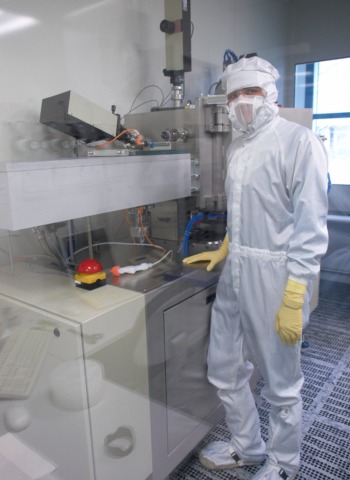Multilayer Structures for the Lithography in Extreme UV (EUVL)

Extreme ultraviolet lithography (EUVL) is nowadays the most promising candidate for integrated circuit manufacturing with the 32nm node and below. In contrast to conventional optical lithography EUV radiation at 13.5nm is strongly absorbed in virtually all materials, even gases. It leads to requirement of vacuum environment and reflective optical elements for the exposure tool. The EUVL optics and masks are based on distributed Bragg reflectors with interference coatings to provide a resonant reflectivity up to 70%. These reflectors are formed by deposition on low thermal expansion material substrates of alternating layers, typically 40 bi-layers of molybdenum (Mo) and silicon (Si), which have different optical constants and layer thicknesses above 3 to 4 nm. The future application of Mo/Si-multilayers (MLs) requires not only a high reflectivity at exposure wavelength but also high layer thickness uniformity, reproducibility, thermal stability and a low stress. Furthermore, the defect-free ML blank deposition with defect density less than 0.003cm-2@25nm is the top challenge of EUVL.
According to defect density and reflectance specifications the process technique for ML coating of mask blank is developed at INA in cooperation with Roth&Rau AG. The reflective Mo/Si-multilayers are fabricated using the dual ion beam sputtering deposition tool „IonSys1000“ under clean conditions of class 1.
